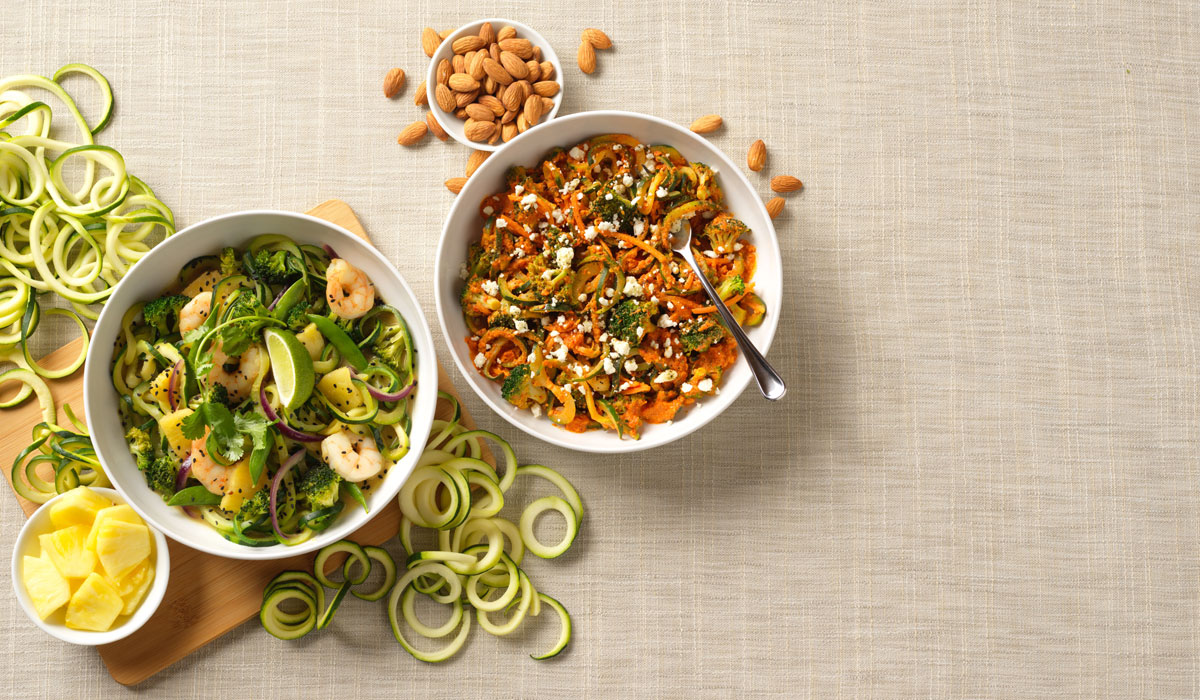When Noodles & Company rolled out new menu items and menuboards in its 460 locations on May 8, it marked a dramatic step forward for the fast-casual chain. The move built on the successful introduction of healthful Zoodles (zucchini noodles) in 2018, and also reflected a deep dive into consumer research that uncovered some interesting insights.
READ MORE: Noodles & Company enters stage 2 of resurgence.
Noodles had clear business objectives in mind. They wanted to optimize menu and communications strategies in order to improve sales, margin, and the customer experience. Specifically, they wanted to:
- Increase average check through focus on attachment, upsell, and high-margin items
- Make ordering easier and faster
- Simplify menu communications
Research and analytics
The first step was a brand usage assessment by 600-plus consumers to help the project team understand consumer attitudes and behavior regarding the current menu and ordering process. The discoveries were not happy ones. The current menu required customers to customize 90 percent of their meal through a four-step process: pick a size, choose a protein, select a noodle “recipe” and add extras and make substitutions. The research clearly conveyed that this order process was illogical, confusing and cumbersome, and culminated with unhappy customers at checkout, where all the costs were added up.
Menu strategy was the next step. The project team reviewed the current menu strategy and developed three alternatives strategies that identified how each menu category and menu item will contribute to achieving Noodles’ business objectives. These three strategies were based on the consumer research, as well as an analysis of historical transaction level data to define customer segments and their sensitivity to pricing and menu changes.
Menuboard design begins
It is important to note that only now—based on a solid research and analytic foundation—did the new menuboards begin to take shape. First, black-and-white schematics were created to illustrate the organization, layout, product placement, space allocation and key communications. Each of these schematics provided “templates” for how Noodles’ optimized menu communications should be organized.
Next, the schematics were developed into color renderings to illustrate what the menuboards would look like. They contained enough detail in the visuals, graphics, copy, branding and colors that we could then conduct quantitative on-line research with 400-plus consumers to successfully validate the business potential of the three new strategies, which all outperformed the current strategy.
Into the stores
The final step in the R&D process was testing the three new menuboard strategies against the current menuboards (control) in 35 Noodles stores. The results were clear: all test groups experienced a lift in per person average check and profit while the control group experienced declines. Specifically, the new menu (with individually priced items) and new menu communications provide customers more clarity around the ordering process and their guest check. Equally important, new menu additions—such as Signature Flavors and Make It a Meal—have high customer appeal which positively impacts average check and margin. These were the clear success measures that led to the May 8 national launch of the new Noodles menuboards.
In retrospect
This menuboard optimization program succeeded because Noodles invested the time and resources to do the job right. The project team members from Noodles, King-Casey, and Revenue Management Solutions worked very closely together. All assumptions were tested thoroughly and either validated or discarded. Each step of the process built on the statistical foundation of the preceding one. As a team, we maintained our focus on the customer experience throughout the project.






